Caps jumping, splashing, flying in all directions above and below the Alps. They celebrated, the lords of contemporary art. They’ve kept the finest bottles chilled and popped them at that time of year when the hordes of pilgrims, devotees, enthusiasts, the unenthusiastic, the busy, the forced, the arbitrators, the contemporary art tourists move between Paris and Turin to punch in at the start of their respective Art Weeks and fulfill the need to be there. Paris, Art Basel week opens: the Fondation Cartier celebrates the opening of its nouveau lieu and nouveaux espaces designed by Jean Nouvel. Put like that, the way Fondation Cartier wrote it on the press release, it sounds like talking about a shed twenty subway stops away and a twenty-minute cab ride from the to-do-lists that tourists pin on their phone screens, tucked away in some high-numbered arrondissement where the city is starting to become suburbia. Instead, the nouveau lie u is a Hausmannian mansion across the street from the Louvre, which is not a euphemism for being within walking distance: from the entrance to the Louvre one crosses the street, enters the Fondation Cartier, and strolls where the Louvre des Antiquaires stood until six years ago. Turin, the week of Artissima opens: the Fondazione Sandretto Re Rebaudengo celebrates its first thirty years of activity by shining the jewels of its collection and arranging them within a large exhibition in two venues (one is the historic one in via Modane, the other is the Automobile Museum) which has been given, not without a hint of exhibited pride, the title News from the near future.
The convergence is interesting: first of all, because if anyone still harbored any doubts about that “unstoppable rise of private museums” that Georgina Adam put in the title of one of her books four years ago, it can be reply that by now one can no longer even speak of an ascent but of an incontrovertible fact, since, apart from a few shining public exceptions, it is in these venues that ’contemporary art has not only the space to experiment, explore, deepen, attempt, entertain, amuse, intrigue, and make mistakes, but now it also has the opportunity to see the formation of a historical horizon relying exclusively on the work of private individuals, since it has been private individuals who have done, over the last thirty to forty years, what the public has often failed to do (and could not do, if one thinks that, when Fondazione Sandretto Re Rebaudengo was established, the only Italian museum totally devoted to contemporary art was Castello di Rivoli). Then because Cartier and Sandretto are celebrating with two exhibitions that do the same thing: go through the entire history of their respective collections all over again. And then because collecting strategies are best talked about if there is a birthday in the middle or if the round anniversary has already passed and this year you have to amaze the world with your new bâtiment.
Cartier has a budget that is three to four times larger than that of Fondazione Sandretto Re Rebaudengo, it has nine years of existence more, it also acts abroadabroad and has to share the public’s attentions with Vuitton, Pinault, Pernod Ricard, but it is located in the most visited city in the world so on the Place du Palais-Royal people still queue up and then disperse within the eight thousand five hundred square meters of space accessible to the public (two-thirds of which are reserved for exhibitions) to see if it is true that “architecture moves as a scenic device serving the broad spectrum of visual arts, photography, cinema, art crafts, performance, live entertainment and science.” And it usually has nothing against it.
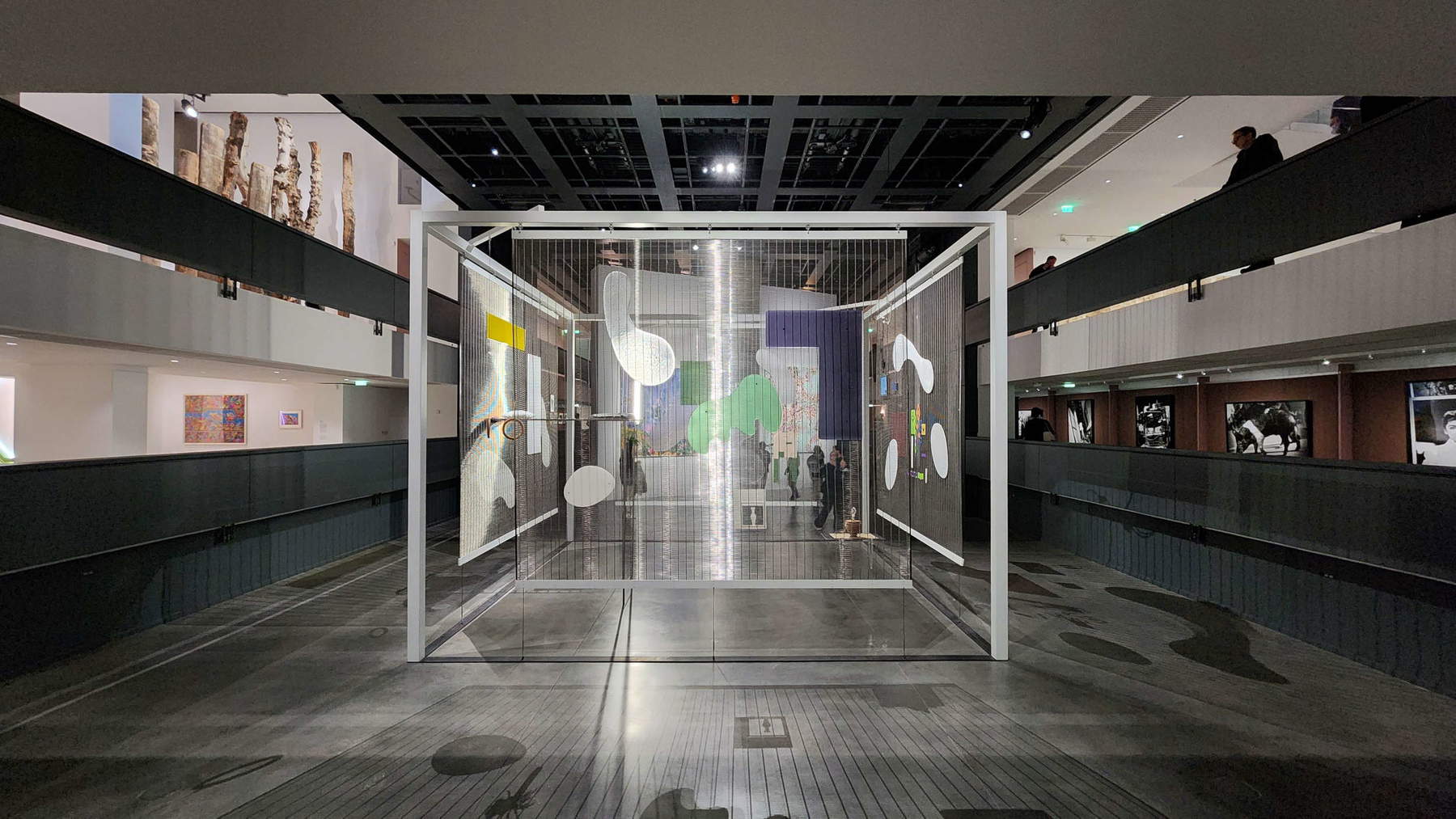
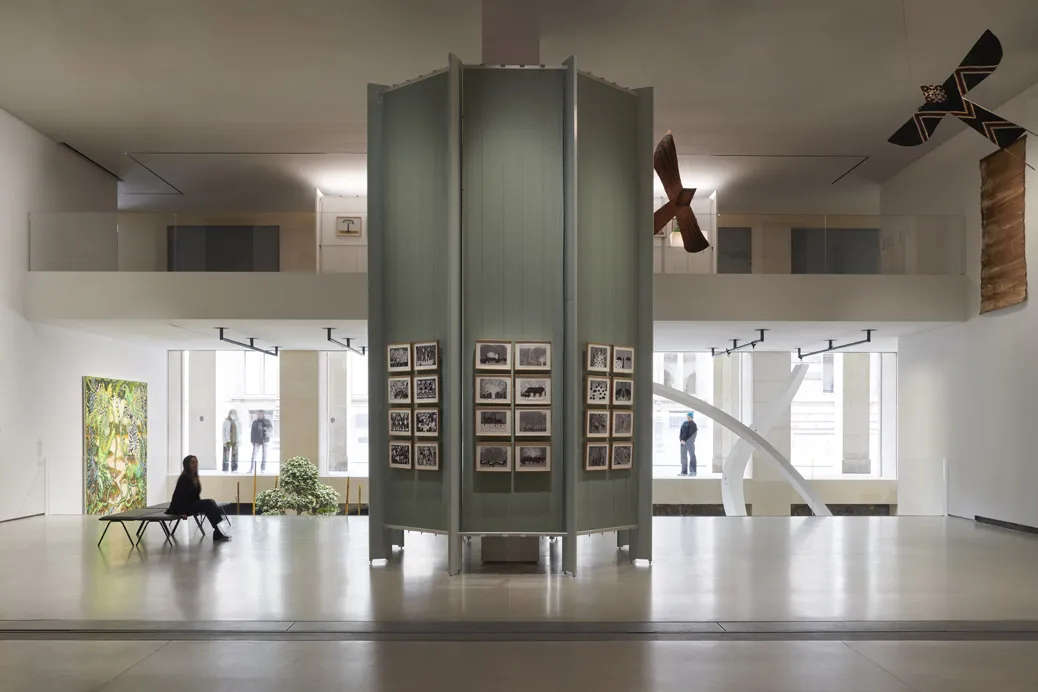
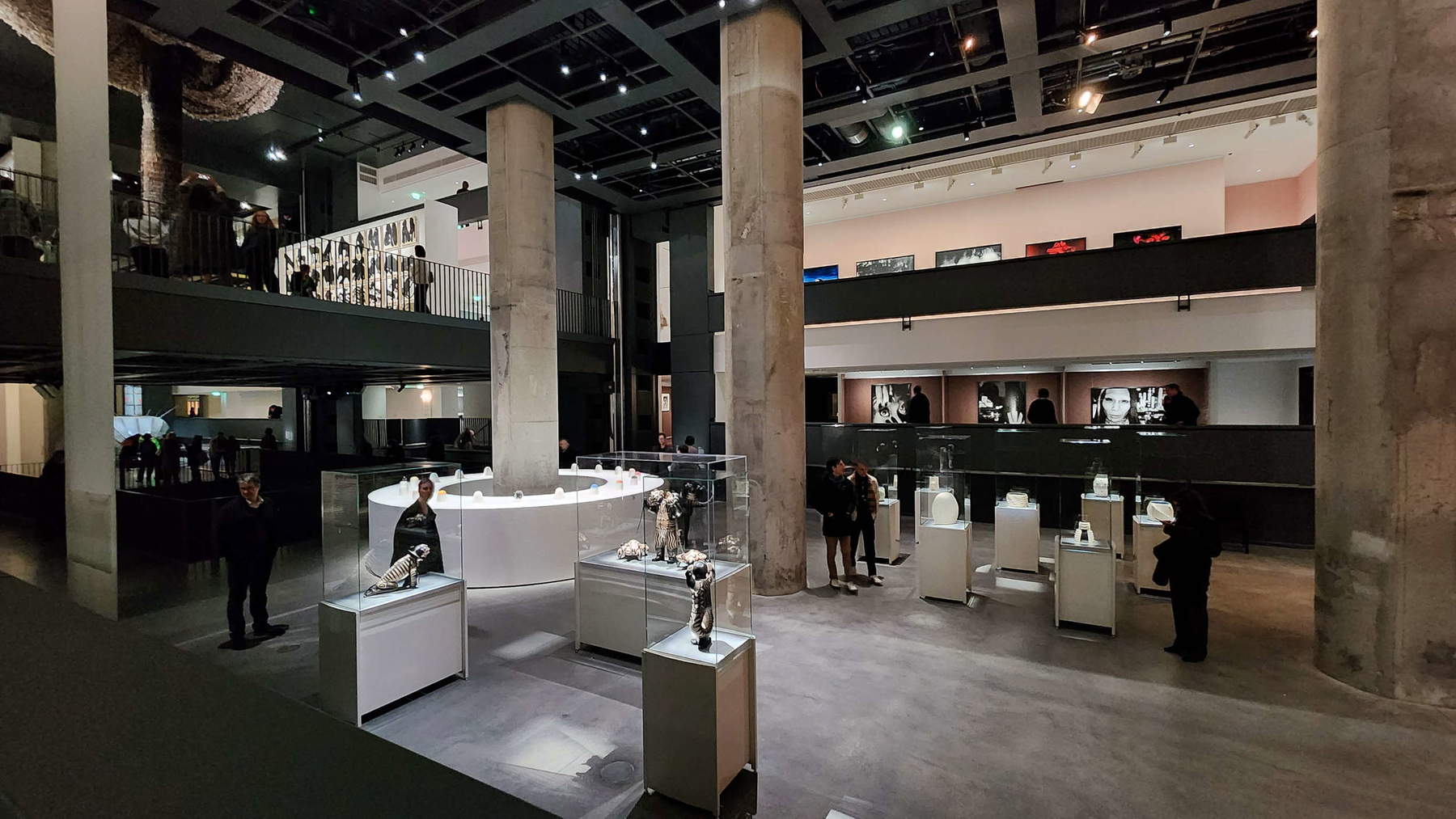
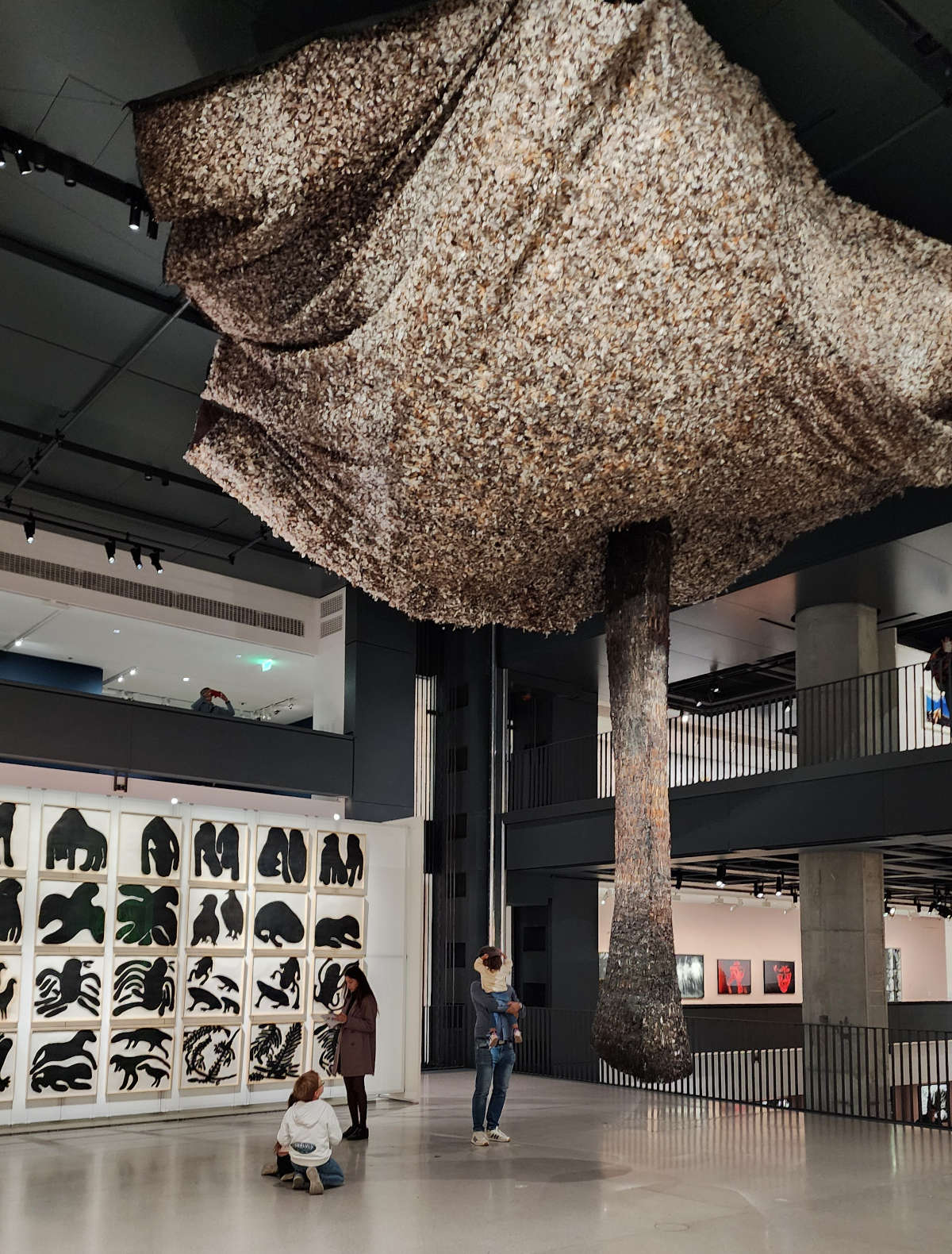
Forty years of Fondation Cartier basically means forty years of contemporary art from Africa, Asia, South America, from all continents, andExposition Générale, the exhibition (very Italian, moreover: the curator, along with Béatrice Grenier, is Grazia Quaroni, general director of the Fondation’s collections, and the installations are by Formafantasma) with which the foundation fills its new space for the first time, starts off immediately high by proposing itself as a “new cartography of contemporary creation,” an “alternative cartography” divided into four moments, in four centrifugal movements, where Bill Viola is exhibited next to reinterpretations of traditional ceramics from southeastern Brazil, where Mendini’s Cathedral coexists with the model that imagines a Kinshasa that looks like something out of a Pronipoti cartoon, where you don’t have time to finish acculturating yourself on the ceramics of Native American pueblos that a Cherry blossom by Damien Hirst immediately pops out at you. The cheerful, programmatic, harmless chaos that results (given that it is fashionable today to mount exhibitions that have no beginning and no end but have only a development, usually palindromic, preferably confusing and composed of separable and overlapping parts) is a deliberate consequence of a collecting and exhibition practice that, it must be said, was already anthropologically oriented in times far removed from any suspicion, but which nonetheless, throughout its forty-year history, has not been able to avoid the feedback of those who have noticed that sometimes the narrative of complexity ends up being absorbed by an inevitably aestheticizing gaze (which is precisely what happens if you happen to hang drawings of indigenous communities in the Gran Chaco forest in front of a huge frottage by Penone, or if theartist who wants to tell the story of the shamanic practices of the Yanomami of the Amazon has studied with the highest paid artists in the West and has done residencies in the most famous museums in the West), which moreover tends to be pandered to by the scenic apparatus. To try to understand how it is possible to avoid offering any impression of unwitting neocolonialism will have to wait for the next installments.
On the other side of the Frejus, the Fondazione Sandretto Re Rebaudengo’s exhibition, though small in size, though without new buildings, let alone in front of the world’s most visited museums, appears more successful and neater not so much because it is less ambitious (if the Fondation Cartier aims to propose an alternative cartography, the Fondazione Sandretto Re Rebaudengo moves, on behalf of the artists, the claim of’a role in addressing “the knots and instances of the present, proposing critical readings and new interpretations of society”) or because it is smaller in size (and if you set yourself broad objectives, it is obviously easier to make mistakes if you have less material at your disposal), but because it is more coherent and, by effect of ’an apparent paradox, more representative of what has happened in the last thirty years of contemporary art, for where Cartier has always favored aesthetic universality, he has followed an’idea of art understood in a global and planetary sense and built its collection, by its statute, also as an archive of exhibitions and commissions, with an encyclopedic logic also claimed in the intentions of this Exposition Générale, Fondazione Sandretto Re Rebaudengo has instead followed more closely the orientations of international contemporary art by building a collection in real time and starting at a time when contemporary art in our latitudes was changing modes and languages.
The reflection of this policy of building a collection marked by a strong synchronic temporality, and which is perhaps the most representative in Italy of the period from the beginning of the 1990s to the present, can be seen in the path of an exhibition that opens to visitors, to continue with the parade of the collection.opens up to visitors, to continue with the cartographic comparison, as if it were, a little more modestly and without pretending to rewrite the foundations of an entire discipline, a kind of atlas of Italian and Western art, an atlas that now, after thirty years of work, is able to document the transformation of languages, practices, means of expression, and themes that we have come to know over three decades of a continuous present that has become history and that presents itself to visitors as a history of art, certainly seen from the perspective of’a collector, certainly partial, certainly positioned along the coordinates of a very marked thought in a political-social sense (in the panels in the room there is not even a lack of schwa ordinance), yet built along a line that is now clear, recognizable, continuous, coherent, solid.
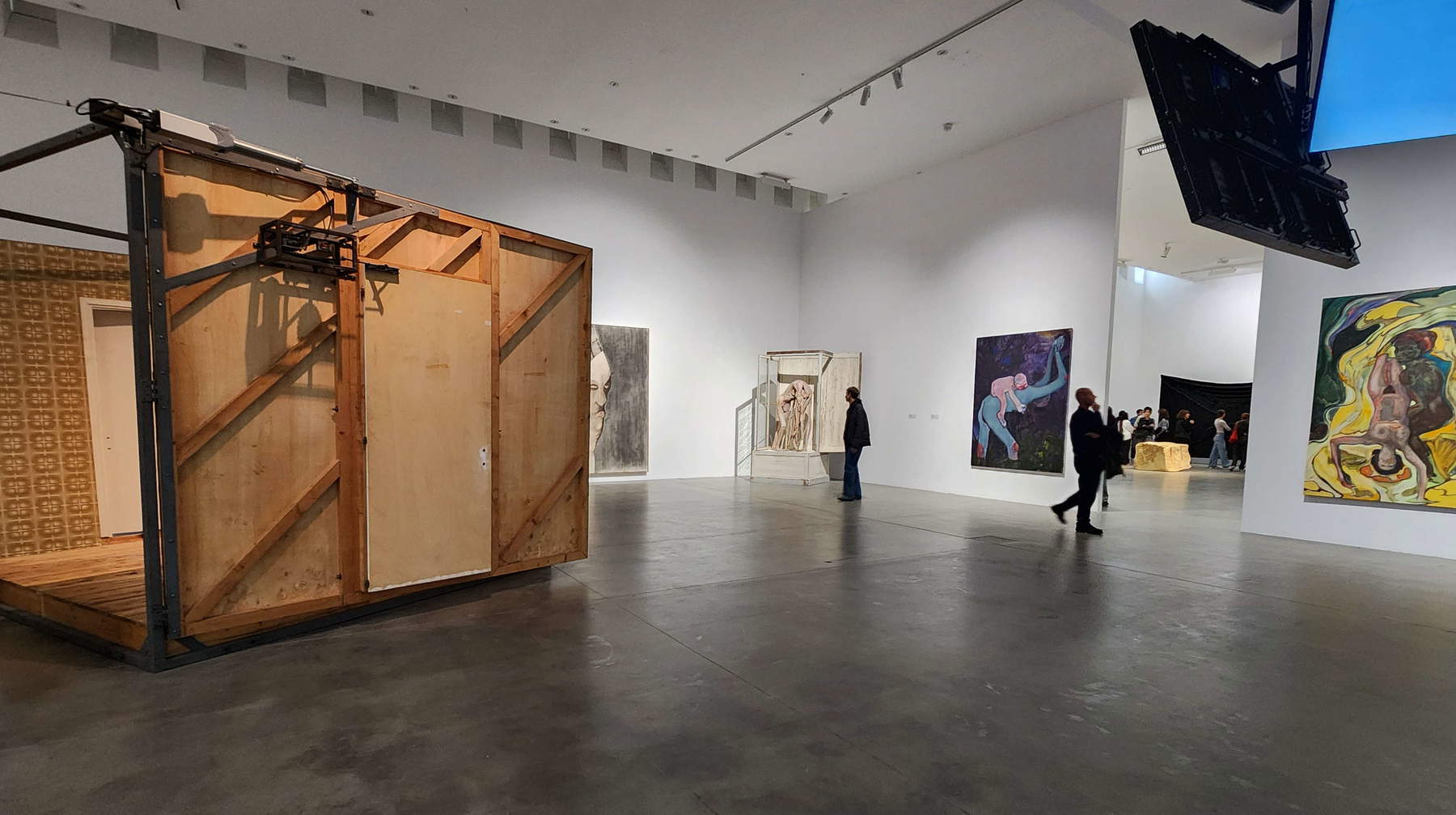

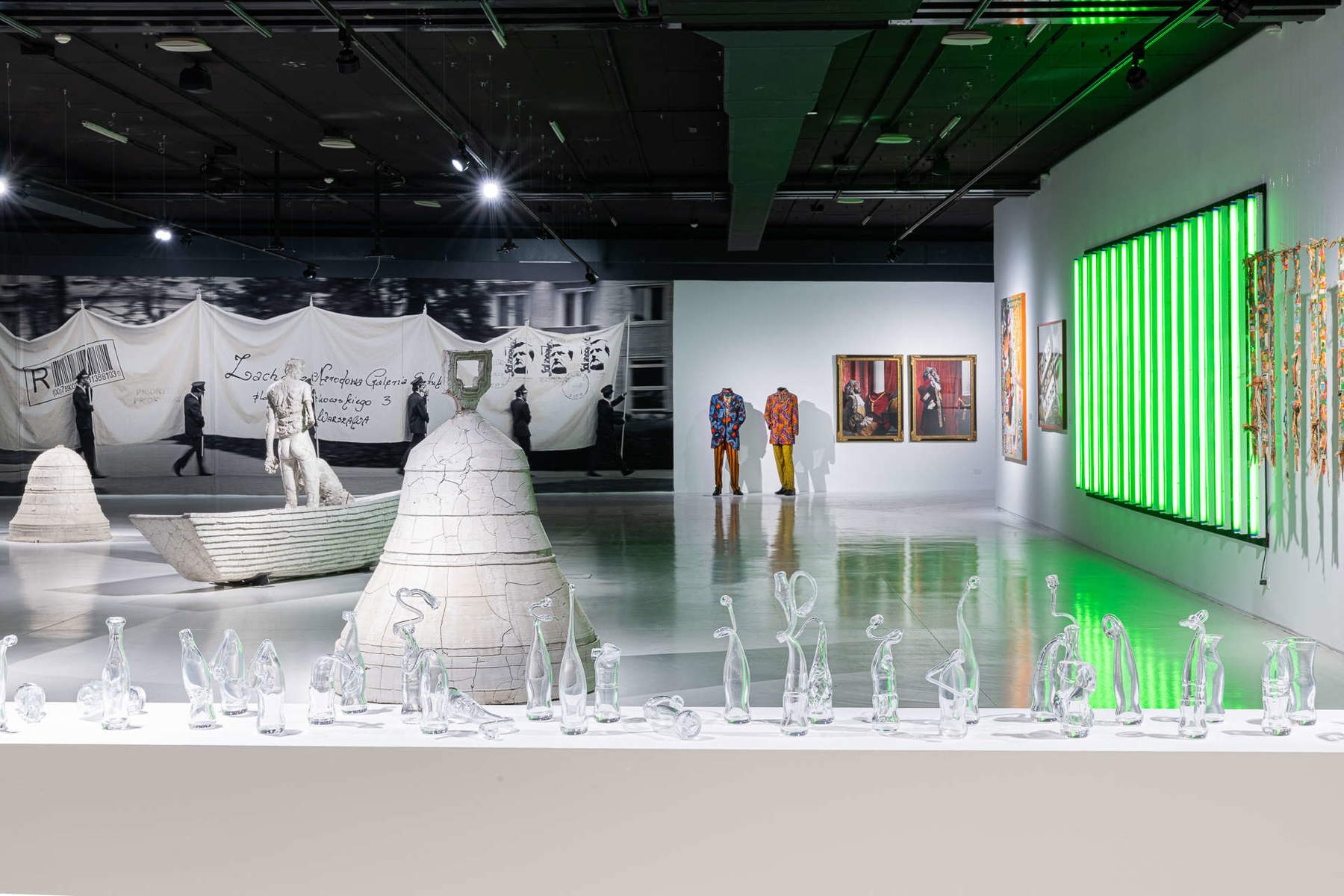
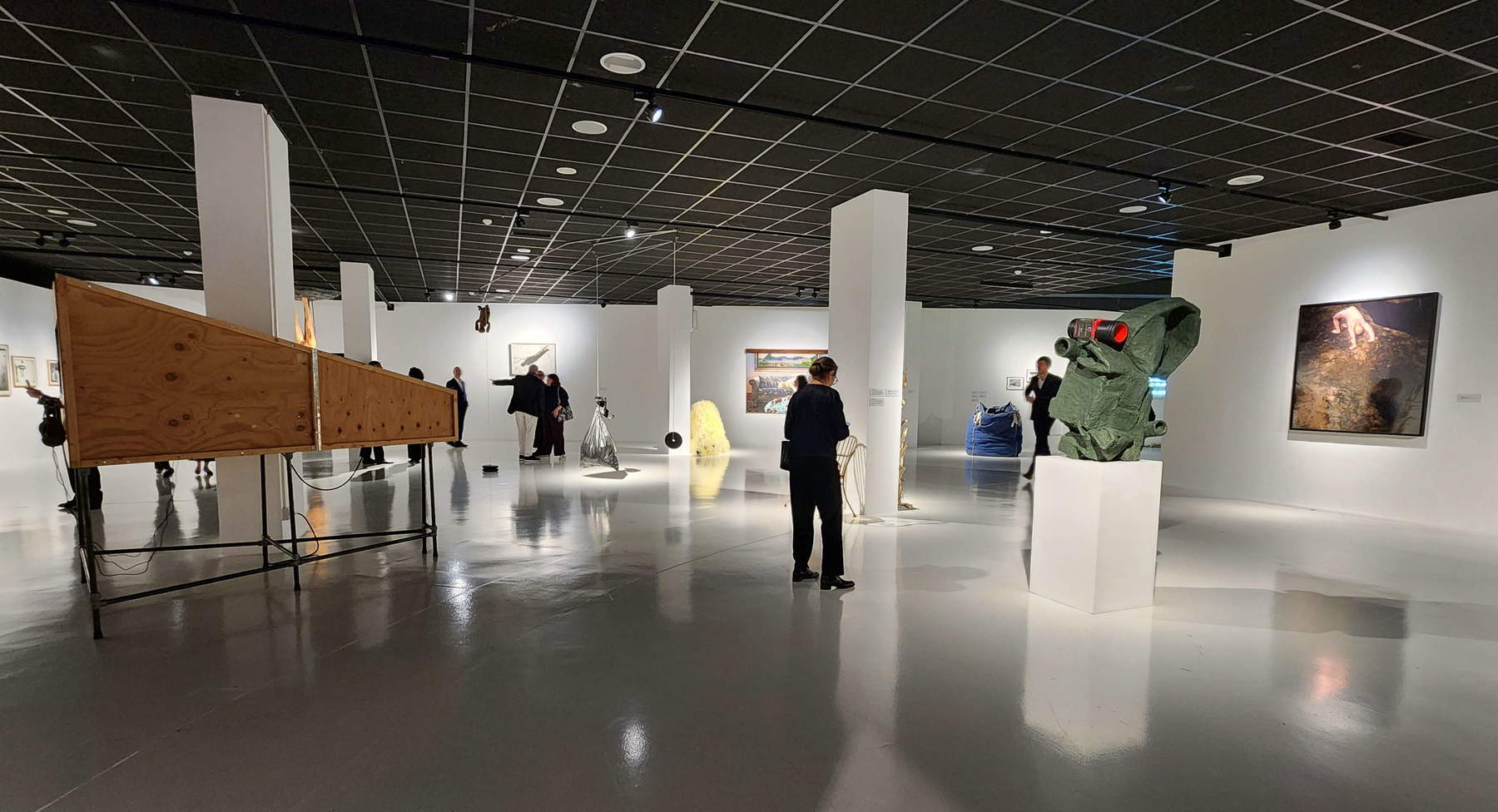
Body, identity, memory, future. These are the four guidelines that the exhibition, within the perimeter of that thought mentioned above, uses to decipher the present. Representation of the body in its inner tensions, whether physical or psychological, with its anxieties or even through its absence, and at the Automobile Museum in its declinations from the 1990s to today and with a coda linked to its dematerialization in the digital age. Identity to be understood essentially as friction between the individual (in the Via Modane venue, the exploration of the self passes, for example, through Cattelan’s squirrel and Stingel’s self-portrait) and the collective (the swastikas in Oehlen’s Führerhauptquartier , a work from 1982, sound sinister, and the Chapman brothers’ Cyber Iconic Man , a sort of quartered martyr hung upside down to lose blood inside a vat, bears all the horrors of the world: part of the section on the body, but would look good anywhere). Future as a possible scenario, sometimes as a space of vindication and affirmation (in this sense to be read Simone Leigh’s large sculpture that stands in the center of the last room of the section at the headquarters, or Ambera Wellmann’s erotic Eden), sometimes as a fuzzy, smoky presence in the literal sense of the word (Glenn Brown’s cloudscape). Memory, in the section at the Automobile Museum, to be understood as the staging of a past on which the present was founded, which in turn will be erased, destroyed, annulled (the ruins of Adrián Villar Rojas, the large bells in the center of the room, which seem to be the stuff of archaeologists, are instead remnants, waste, relics of a post-apocalyptic future). Closing with a swollen nocturne of silence, Pol Taburet’s ghostly presences looming over the visitor on par with Ragnar Kjartansson’s country concert in the Rocky Mountains to make him wonder about the meaning of everything he has seen so far, assuming he feels like listening. Or at least to realize that his present is already the near past and that that near future of the title is actually the title of a video installation from twenty years ago.
What was teeming with the future is now already history. A singular, poetic contradiction of an exhibition that reasons about the future after presenting it as exhibition material, that questions the present by looking backwards and that is perhaps the most effective epitome of our condition, of theexistence of those who live within a present that has become permanent, a landscape where the horizon, if there is one, is distant and covered, a continuous and global flux that is self-sustaining, self-annihilating, and self-documenting, that has encompassed the future and reversed chronologies. Above and below the Alps there are no chronologies, and the present is simultaneity of presences, coexistence of temporal and cultural layers, a living archive, an observable experience at the speed of private foundations that have consolidated and, to some extent, even canonized contemporary art with means and energies that were not even imaginable a few years ago. Cartographies and atlases. Global encyclopedias and visual and affective archives. Transcultural dialogues and transgenerational dialogues. Above and below the Alps, time is fluid and the sky, for some reason, has decided not to change color.
Warning: the translation into English of the original Italian article was created using automatic tools. We undertake to review all articles, but we do not guarantee the total absence of inaccuracies in the translation due to the program. You can find the original by clicking on the ITA button. If you find any mistake,please contact us.